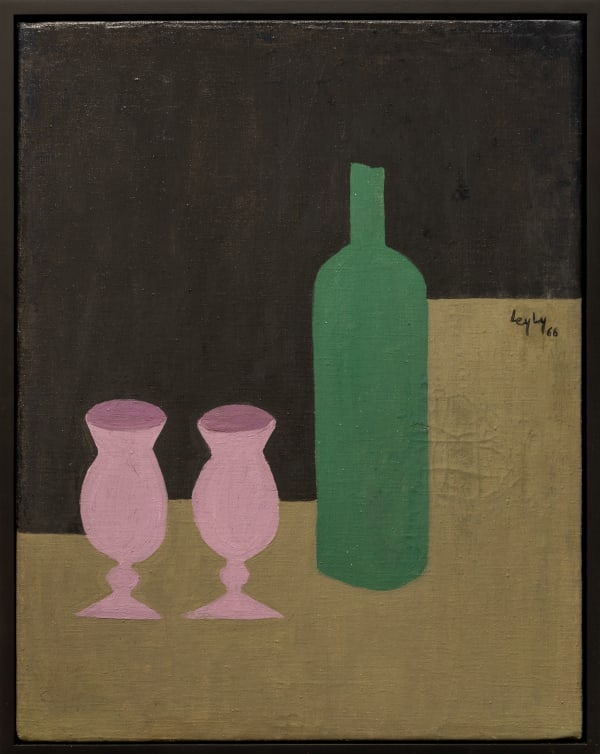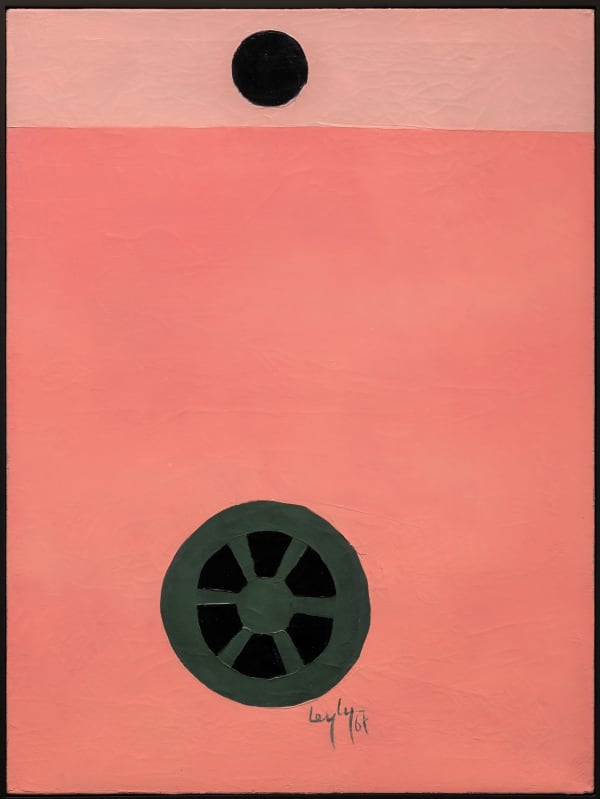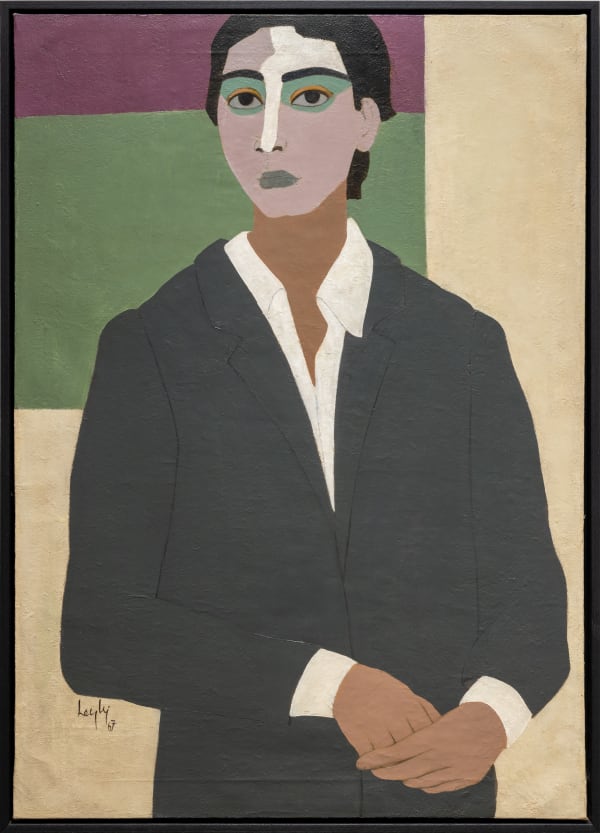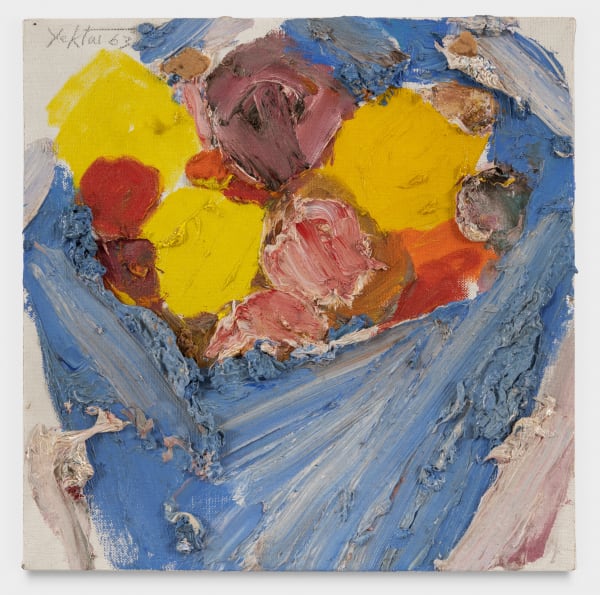-
Frieze No.9 Cork Street 2024
Leyly Matine-Daftary and Manoucher Yektai -
Dastan is pleased to announce the duo presentation “Perfect Strangers: Leyly Matine-Daftary and Manoucher Yektai,” held at Frieze’s No.9 Cork Street location in London. Curated by Negar Azimi, writer and editor-in-chief of Bidoun, this exhibition pairs rarely seen works by two iconic Iranian artists, each of whom turn genre painting on its head. The exhibition opens on September 5th and will be on view until September 21st, 2024.
-
Leyly Matine - Daftary

-

Leyly Matine-Daftary
Untitled, 1966 -
Curator's Note
Perfect Strangers: Leyly Matine-Daftary and Manoucher YektaiCurator's Note [Read in full]We have no record of them ever meeting, Leyly and Manoucher. At least one person suggests they might have, in 1970, when he spent an extended season in the land of his birth. She was a granddaughter of Mohammad Mossadegh, the ill-fated Iranian nationalist leader removed from power care of an Anglo-American coup. He was the descendant of a long line of cultured public servants and merchants. Both of their lives were marked by foreign itineraries. Both of them set out to be artists who went against the grain.Yektai’s art studies began at Tehran’s newly formed Faculty of Fine Arts, colloquially referred to as “Honarkadeh,” where he encountered modern European painting for the first time care of the school’s Beaux Arts curriculum. Some Honarkadeh students staged rebellions against the prevailing pedagogy and Yektai was no exception, energetically arguing with a professor one day over his right to paint a cucumber red. He left school without graduating, in 1944, and headed to New York, where he took classes at the Art Students League and fatefully encountered Jackson Pollock’s work in an issue of LIFE magazine. His ultimate destination, though, was France, where he planned to study with the Cubist painter Andre Lhote.Matine-Daftaryleft Iran even earlier, at 13, to study at Cheltenham Ladies College in the UK, where she indulged in theater and painting. At 18, she enrolled at the Slade, where her professors included Lucian Freud. Freud introduced her to the palette knife and may or may not have influenced her future work in other ways; the angularity that characterized the portraiture of Freud and his London School compatriots find echo in Matine-Daftary’s later portraits, which often feature striking geometries demarcated by the use of color.Meanwhile, France was a disappointment for Yektai—its arts education stodgy and conservative. He returned to New York, deep in the throes of a new movement called Ab Ex, and began developing what would become his signature style: heavily impastoed, almost sculptural, canvases which took still lives, figures and landscapes as their point of departure—a legacy, one might suggest, of his classical arts education in Tehran. The work felt both familiar and new, kicking the quotidian into another dimension— formally, spiritually—while always teetering between figuration and abstraction, never giving in to either and defying the art historian’s persistent call for “purity.” -

-
Curator's Note
Curator's Note [Read in Full]“Yektai,” the renowned poet John Ashbery wrote in 1961, “wants to render us conscious of our existence from second to second, of the joy of breathing, of the rapid changes of things.” Soon, he began to be counted among the Ab Exers and the New York School, to which he said, “I don’t like to be considered part of any group,” memorably insisting that his work was “stateless.” When his fellow artist Larry Rivers asked him if he’d ever deviate from still-lives and paint the likes of an airplane, he replied, “I want to paint an apple until it flies!”
All the while, Yektai maintained a vivid poetry practice; his most well-known poem, Falgoosh, an epic about an Iranian folk fortune telling tradition, extravagantly scrambles rhyme and meter—making it a touchstone in the history of modern Iranian poetry. A political parable, Falgoosh was staged at the avant-garde Shiraz Festival of the Arts in 1970 and continues to both bewilder and titillate new generations of readers.
Just as Yektai was habituating to life in America, Matine-Daftarymoved back to Tehran in the late 1950s and began teaching at the Faculty of Fine Arts. She also began to make the work that she would come to be known for—flat brightly rendered canvases marked by a taut and deceptive simplicity. In their conjuring the inner lives of everyday objects, they occasionally evoke Japanese Shijo painting. About their flatness, there is much to say: like écriture plat, which served as an affront to affectation in literature, Matine-Daftary’s paintings can feel like a riposte to ornamentation in Persian painting. She tended toward people and still lives in her art, and yet to characterize her as a mere figurative painter would be misleading; as the artist Fereydoun Ave has noted, her core concern was “the abstract division of space.”
Traditional ideas about pictorial space were jettisoned as she used blocks of color in both foreground and background to create new dimensionalities.
The exhibition at hand is an amuse-bouche, a provocation and an experiment, featuring rarely seen works by both artists, comprising landscapes, portraits, and still lives. Both armed with a classical education, both formalists of a sort, they each turned genre painting on its head—making it distinctly their own. Both Matine-Daftaryand Yektai pulled upon things close at hand—friends and fellow travelers, and of course, their immediate environment; Matine-Daftarywas prone to painting the stones (sang-chin), persimmons (khormaloo), and plane trees (derakht-e-chenar) around her North Tehran home, while Yektai often depicted an amalgam of the various topographies he had lived in and around, including that of the South Fork of Long Island, where he settled and spent decades making art of and about subjects as simple as a tomato plant. Notably, both artists resisted the call in Iranian modern art to address a national vernacular, most vividly manifest in what came to be known as the Saqqakhaneh movement. Both resisted being commodified as part of any group; both struck out on their own. Finally, both died in exile— Matine-Daftaryin Paris, in 2007, and Yektai in Long Island, in 2019.
So, strangers. The late sociologist George Simmel defined strangers as distinct from “outsiders” or “wanderers.” Strangers are at once close and distant, intimate and alien. In this way, Matine-Daftaryand Yektai are indeed strangers: impossible to reduce to tidy art historical designations. Perfect strangers, to each other and to traditional art histories, they meet here.
** Perfect Strangers would not have been possible without the support of the artists’ families: Suri Farman-Farmaian and the Estate of Manoucher Yektai in particular. Additional thanks to Ali Bakhtiari, Leila Moghtader, Alireza Fatehie, Ashkan Zahraei, and Karma.
Leyly Matine-Daftary (Iranian; b. 1937, Tehran, Iran—d. 2007, Paris, France; lived and worked in Paris and Tehran)
Manoucher Yektai (Iranian-American; b. 1921, Tehran, Iran—d. 2019, New York, USA; lived and worked in New York)
-

Manoucher Yektai
Fruit Bowl, 1959Oil on canvas
40.6 x 48.3 cm
16 x 19 in -
Previous Exhibitions
at Frieze No.9 Cork Street London












